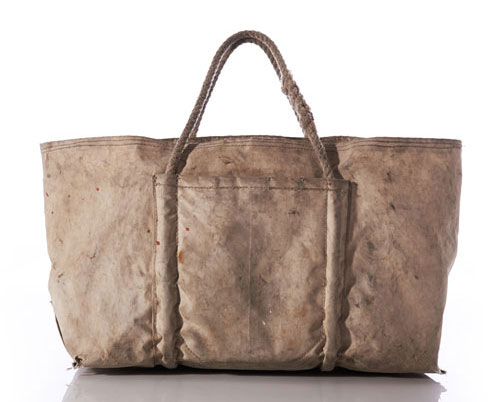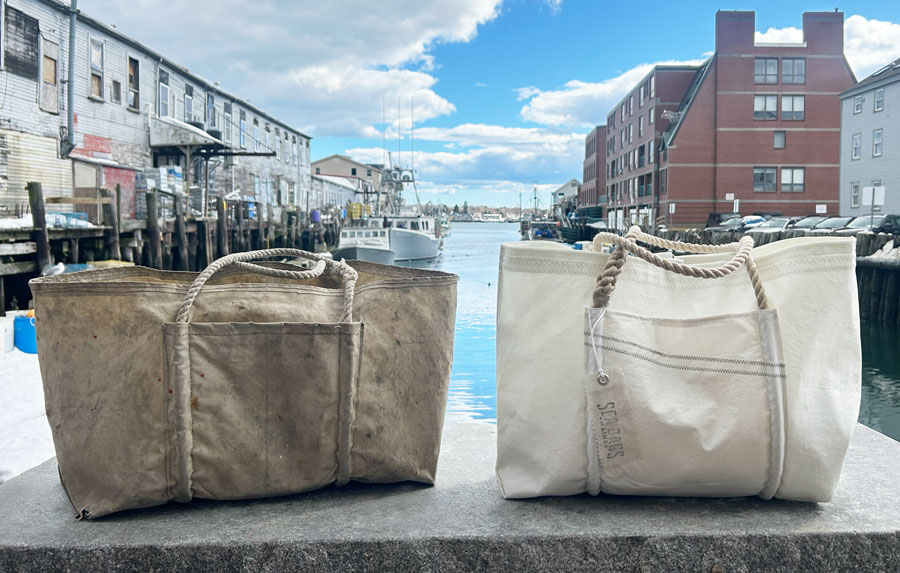
How One Fisherman's ToteSPARKED A LEGACY
Most companies begin with a single idea—a spark that ignites a bigger purpose.For Sea Bags, that spark was the Jeb Tote.
Jeb was a fisherman working out of Custom House Wharf, the very place Sea Bags still calls home in Portland, Maine. Every day, Jeb carried his tools and supplies in a rugged tote made from recycled sail cloth, one of the very first Sea Bags ever created.

Over time, that tote became more than a bag; it became part of his daily life, a trusted companion shaped by hard work and sea air.
When Jeb passed away, his wife returned the well-worn tote to our founder. It was a simple gesture, but a deeply meaningful one—an acknowledgment that the bag, like Jeb, was part of something bigger. It represented a connection to the sea, to community, and to a sustainable way of life.

That original bag inspired what would later become our Wharf Tote, a design that has been refined but still carries the same spirit. It's a symbol of where we come from and where we're headed.
Every Tote Tells a Story
We believe in creating with purpose, which is why all of our bags are handcrafted in Maine from recycled sail cloth and other made-in-the-USA materials. We work to give new life to sails that have already weathered the elements—each one unique, with its own past and promise.
Our commitment to sustainability is stitched into everything we do. By reusing sail cloth that would otherwise end up in landfills, we reduce waste and honor the history embedded in every fiber. We don't just make bags, we preserve legacies and keep maritime heritage alive in a modern, functional form.
The Jeb Tote may have started it all, but it's the values behind it; community, sustainability, and craftsmanship that continue to guide Sea Bags today. And with every sail we reclaim and every bag we build, the story lives on.
